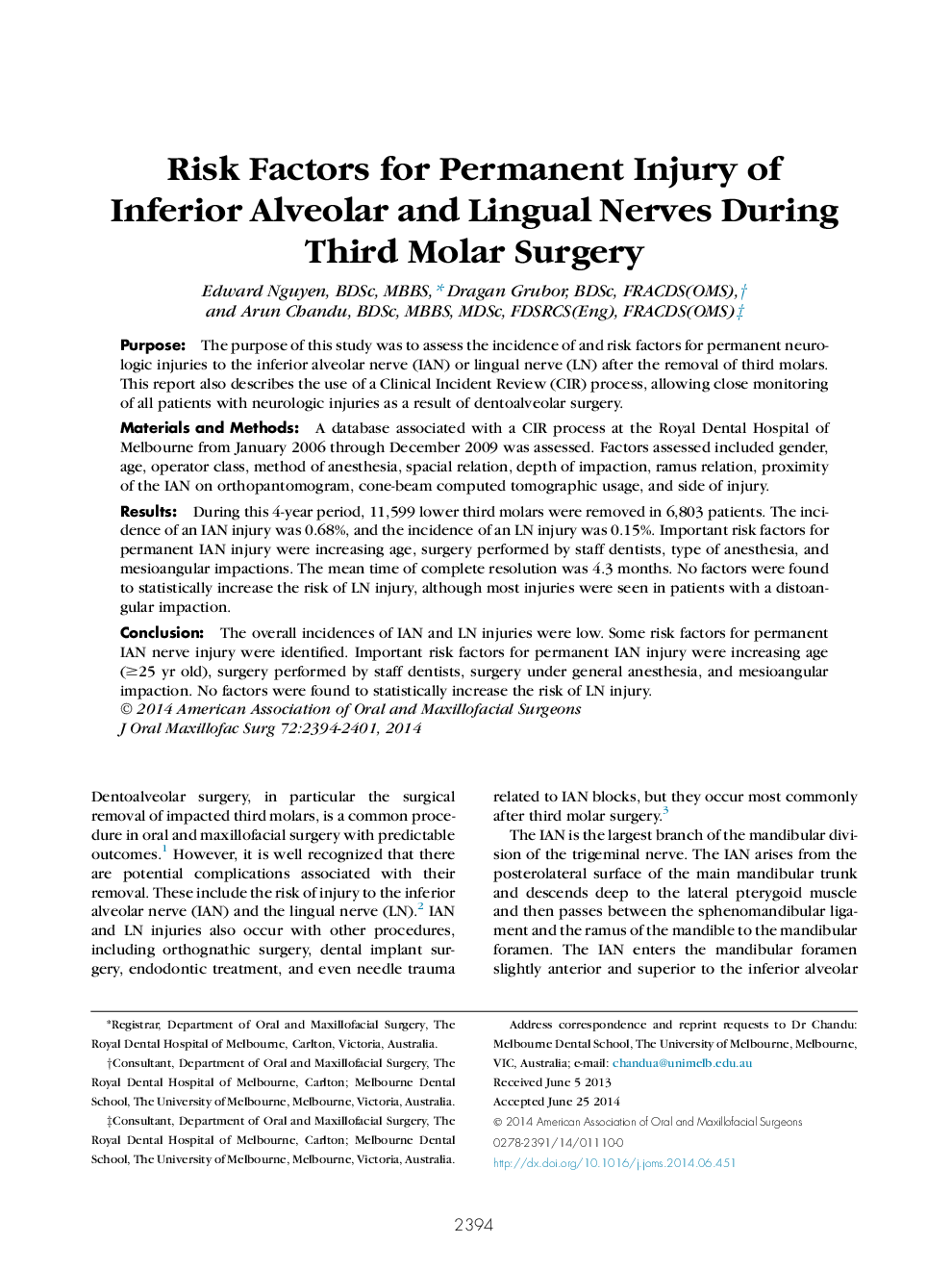| Article ID | Journal | Published Year | Pages | File Type |
|---|---|---|---|---|
| 3152684 | Journal of Oral and Maxillofacial Surgery | 2014 | 8 Pages |
PurposeThe purpose of this study was to assess the incidence of and risk factors for permanent neurologic injuries to the inferior alveolar nerve (IAN) or lingual nerve (LN) after the removal of third molars. This report also describes the use of a Clinical Incident Review (CIR) process, allowing close monitoring of all patients with neurologic injuries as a result of dentoalveolar surgery.Materials and MethodsA database associated with a CIR process at the Royal Dental Hospital of Melbourne from January 2006 through December 2009 was assessed. Factors assessed included gender, age, operator class, method of anesthesia, spacial relation, depth of impaction, ramus relation, proximity of the IAN on orthopantomogram, cone-beam computed tomographic usage, and side of injury.ResultsDuring this 4-year period, 11,599 lower third molars were removed in 6,803 patients. The incidence of an IAN injury was 0.68%, and the incidence of an LN injury was 0.15%. Important risk factors for permanent IAN injury were increasing age, surgery performed by staff dentists, type of anesthesia, and mesioangular impactions. The mean time of complete resolution was 4.3 months. No factors were found to statistically increase the risk of LN injury, although most injuries were seen in patients with a distoangular impaction.ConclusionThe overall incidences of IAN and LN injuries were low. Some risk factors for permanent IAN nerve injury were identified. Important risk factors for permanent IAN injury were increasing age (≥25 yr old), surgery performed by staff dentists, surgery under general anesthesia, and mesioangular impaction. No factors were found to statistically increase the risk of LN injury.
